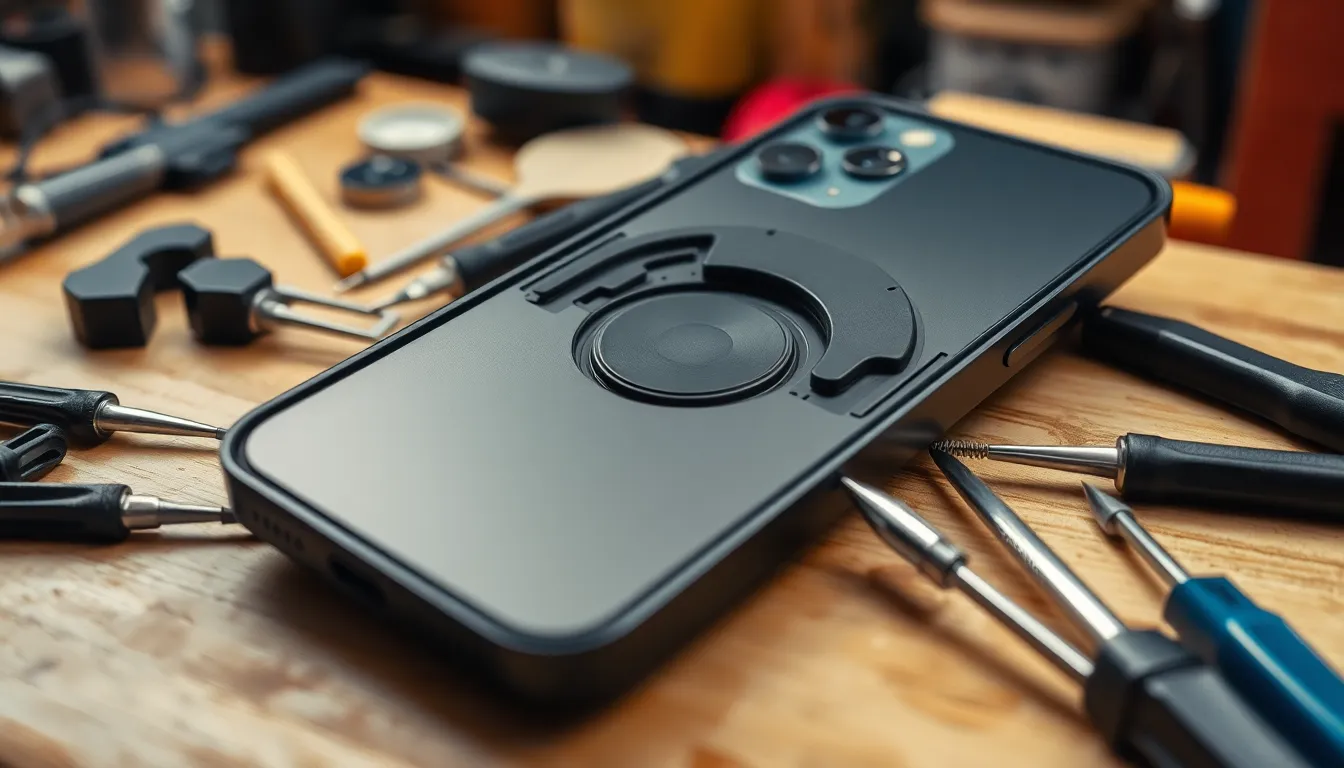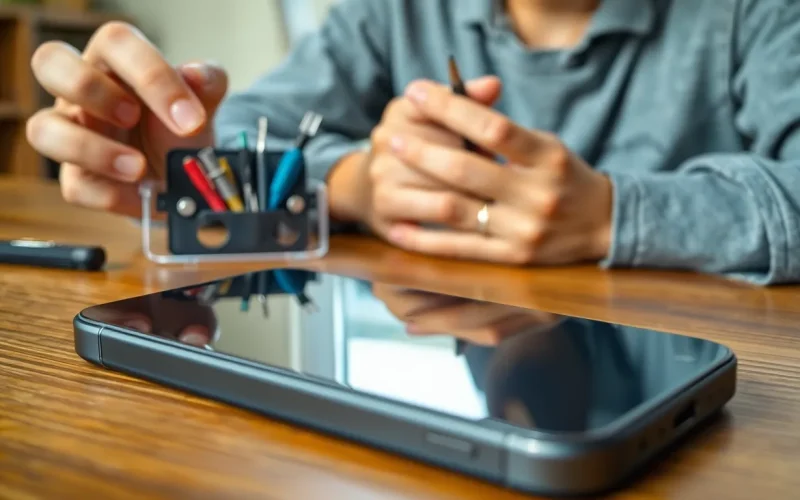Table of Contents
ToggleImagine this: you’re jamming out to your favorite playlist when suddenly, your iPhone 11’s speaker decides it’s time for a permanent vacation. Silence fills the air, and your tunes are replaced by the sound of disappointment. If you’re wondering how much it’ll cost to bring your audio buddy back to life, you’re not alone.
The price tag for fixing a speaker can vary more than your mood on a Monday morning. From DIY fixes to professional repairs, understanding your options can save you time and a few bucks. So let’s dive into the nitty-gritty of speaker repair costs, ensuring you get back to enjoying those sweet sounds without breaking the bank.
Overview of iPhone 11 Speaker Issues
iPhone 11 users frequently encounter speaker-related problems. Malfunctions can manifest as low volume, distorted sound, or complete silence during calls and media playback. These issues often stem from reasons such as software glitches, debris accumulation, or hardware failures.
Software bugs contribute to speaker malfunctions in various scenarios. Users sometimes find that a simple restart resolves these issues. Installing software updates enhances device performance and resolves compatibility problems with other apps.
Debris accumulation in the speaker grille often impedes sound quality. Dust or lint can block sound output, leading to muffled audio. Cleaning the speaker area with a soft brush or compressed air can restore sound clarity.
Hardware failures pose a more significant challenge. Damaged components might require professional intervention. Common replacements include the speaker assembly and the logic board, with costs varying based on the repair method.
Repair costs differ based on whether users opt for do-it-yourself repairs or professional services. DIY kits can range from $10 to $50, while professional repairs often cost between $100 and $200. Warranty or AppleCare coverage may reduce expenses, providing peace of mind.
Understanding these aspects enables users to navigate speaker repair options effectively. Grasping the underlying causes aids in making informed decisions about repairs. An early assessment prevents further damage, ensuring optimal performance of the device.
Factors Influencing Repair Costs

Several factors affect the costs associated with fixing an iPhone 11 speaker. Understanding these variables helps users make informed decisions about repairs.
Type of Damage
Type of damage plays a significant role in determining repair costs. Minor issues, like debris blocking the speaker, often require simple cleaning, resulting in minimal expenses. However, more severe problems, such as hardware failures or water damage, lead to higher repair costs. When the speaker component itself malfunctions, replacement parts may be needed, raising the total due to parts and labor costs. On average, extensive damage could result in costs as high as $200, while simpler fixes remain around $50.
Repair Service Location
Repair service location impacts the overall cost of speaker repairs significantly. Authorized service centers usually charge more due to their reputation and reliance on genuine parts. In contrast, independent repair shops may offer lower rates, although they might utilize third-party components. Geographic differences also come into play; urban areas often present higher repair prices compared to rural settings. Diagnostics, labor rates, and travel distance all influence the final cost, emphasizing the need for users to compare options before proceeding with repairs.
Authorized Repair vs. Third-Party Repair
Choosing between authorized and third-party repair options for an iPhone 11 speaker affects repair costs and service quality. An understanding of both choices helps users make informed decisions.
Pros and Cons of Authorized Repair
Authorized repair centers provide genuine Apple parts, ensuring compatibility and reliability for repairs. Technicians have specific training and access to proprietary tools, leading to high-quality service. However, higher prices often accompany these benefits, with costs typically ranging from $150 to $200. Warranty coverage for repairs adds peace of mind. Limited availability can be frustrating, especially in rural areas.
Pros and Cons of Third-Party Repair
Third-party repair services often offer lower prices, making them an attractive option for budget-conscious users. Costs typically range from $100 to $150, significantly less than authorized repair centers. Faster service can lead to quicker turnarounds. However, parts may lack quality assurance, risking future device issues. Warranty voiding is another concern, as unauthorized repairs can nullify coverage. Users should weigh these factors before choosing a repair path.
Average Cost Estimates
Costs for repairing the speaker on an iPhone 11 vary based on the repair method chosen. Understanding these estimates helps users make informed decisions.
DIY Repair Costs
DIY repair kits for the iPhone 11 speaker typically range from $10 to $50. These kits usually include essential tools and parts for basic fixes. Simple issues, such as debris removal or minor adjustments, often benefit from these solutions. Users confident in their skills can save significantly by opting for DIY repairs. However, it’s crucial to ensure proper technique; poor repairs can lead to further damage.
Professional Repair Costs
Professional repair services for an iPhone 11 speaker usually range from $100 to $200. Authorized service centers often charge higher fees due to their use of genuine Apple parts and expertise. Costs at these centers often fall between $150 and $200. Third-party repair shops provide a more budget-friendly option, with services costing between $100 and $150. Although faster service may be available, users should consider potential drawbacks like lower-quality parts and warranty implications.
Tips for Reducing Repair Costs
Consider checking DIY guides before opting for professional help. Many users find that simple repairs, such as cleaning the speaker grille, often fix sound issues without any cost. Utilizing online tutorials can provide clear instructions, leading to successful repairs.
Explore different repair shops in the area. Independent shops usually offer lower prices compared to authorized centers, often ranging from $100 to $150. These shops might use third-party parts that still maintain quality at a fraction of the price.
Evaluate the possibility of warranty coverage. If the iPhone 11 remains under warranty, authorized service may incur little to no cost. Users should check the warranty status online or via the Apple Support app to confirm their eligibility before proceeding.
Prioritize getting multiple quotes. Comparing estimates from different repair shops allows users to identify the most affordable options. This approach can save money, especially when repair costs vary significantly between locations.
Research promotional offers or discounts. Some repair shops periodically run promotions that can lower overall expenses. Keeping an eye on local ads or social media channels may lead to significant savings.
Assess whether the issue is hardware or software related. Software glitches are often resolved through updates or simple resets, avoiding repair costs altogether. Users should take the time to troubleshoot before deciding on more extensive repairs.
Ultimately, these strategies help individuals navigate their repair options effectively, ensuring they reduce costs while maintaining the functionality of their iPhone 11.
Repairing a malfunctioning speaker on an iPhone 11 can vary widely in cost depending on the severity of the issue and the chosen repair method. Users should weigh the benefits of DIY solutions against professional services to find the best fit for their needs and budget. While minor issues might be easily fixed at minimal expense, more serious problems could lead to higher repair costs.
It’s crucial to consider factors such as the location of the repair service and the quality of parts used. By exploring different options and gathering multiple quotes, individuals can make informed decisions that ensure their device is restored to optimal performance without overspending.





